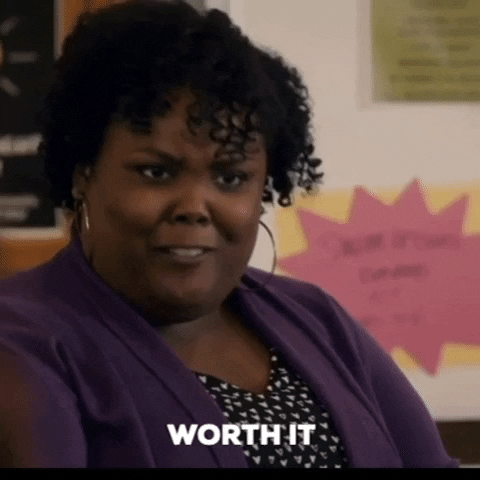How to Calculate the Average Sales Cycle Guide (+ Improve It)
How to Calculate the Average Sales Cycle Guide (+ Improve It)
How to Calculate the Average Sales Cycle Guide (+ Improve It)
Learn what the average sales cycle is, how it’s calculated, industry benchmarks, factors that affect it, and some best practices to improve it.
Learn what the average sales cycle is, how it’s calculated, industry benchmarks, factors that affect it, and some best practices to improve it.
Learn what the average sales cycle is, how it’s calculated, industry benchmarks, factors that affect it, and some best practices to improve it.



Does your B2B sales pipeline look like an endless race with no finish line in sight? 🏁

The problem might be your average sales cycle length.
It’s the average time it takes your team to close a sale once a lead enters your sales pipeline.
This article covers what an average sales cycle is, how you can calculate your average sales cycle length, and what’s a good benchmark.
We’ll also discuss why you should track your average sales cycle and some best practices to improve your sales cycle effortlessly.
Ready?
Get, set, go!! 🏎️
What Is the Average Sales Cycle?
The sales cycle length is the average time your sales team takes from first contacting a lead 👋 to closing the deal. 🤝
Essentially, a sales cycle or sales pipeline begins when a new lead becomes aware of your product or service and ends when they become a paid customer.
However, the road from the first introduction to the final purchase isn’t a sprint race.
Instead, it’s a marathon — and may consist of stages that continue for months.
What Are the Stages of a Sales Cycle?
Let’s find out what the stages of a sales cycle are:
1. Lead Generation
The first step of a sales process is to find potential customers who may be interested in your SaaS product. For a product-led company, a lead could be any potential customer who has derived meaningful value from your product by signing up for a free trial or the freemium plan.
Check out our detailed guide on product-qualified leads.
2. Lead Qualification
Not every lead you connect with will go gaga over your product or service. And that’s ok!
It’s up to your sales representative to verify if the lead is worth the chase.
How?
By using lead scoring.
Your sales rep will assign a numeric value to each lead based on the deal size, buyer persona, and other factors to identify the ‘most qualified leads’ 🎓. Using this lead scoring process, they’ll prioritize the most important prospects to contact first.
3. Prospect Engagement
Once your sales team has the most promising leads sorted out, your sales reps should reach out to them and learn more about their pain points.

Based on their pain points, your reps can show the prospect how your product solves their problems and how you’re the rockstar of the industry. 🤘😎🤘
Or, you can cut the sales call short with Toplyne, which instantly highlights who to target based on in-app actions and gives you ideas on how to engage with them.
4. Overcome Objections
While engaging with the leads, your sales reps will discover your prospect’s biggest reservations. Maybe they find the price too high or need more features under a plan.
During this stage of the sales process, your reps must convince them how valuable your product can be for their business and why the price is justified.
At this point, your prospect should feel like it’s actually…

5. Closing the Deal
If the lead isn’t convinced, unfortunately, your sales cycle might end here. ☹️
But if they like what they see and need a slight nudge, your sales reps can throw in a discount coupon or give them an additional month for free under the paid plan to seal the deal.

And once they sign up for your paid plan, your reps can introduce them to your customer success teams to onboard them.
Check out this guide to creating a fantastic product-led onboarding program.
6. Nurturing
Thought you were done?
No!
Even though the cycle is technically complete, this leads to the final sales process stage: Nurturing.
Your sales managers should regularly check in with customers to see if they’re happy with the product and ask them for referrals.
Why is this important?
It helps feed the sales cycle with more leads.
Additionally, a sales leader may try to upsell or cross-sell to existing customers.
This will increase the deal size of your existing user base (a.k.a. customer lifetime value) for an instant boost in revenue.
Did you know Toplyne can automatically identify upsell and cross-sell opportunities for you?
Now that you know what a typical sale cycle looks like, let’s see how you can calculate the average sales cycle length for your business.
How to Calculate the Average Sales Cycle Length
The formula for calculating the average sales cycle length is:
Average Sales Cycle Length = The total number of days spent on all sales combined / number of deals won
For example, let’s say your sales reps took 50, 70, 65, and 80 days respectively, for closing deals.
To calculate the average sales cycle length, you’d first add up the total number of days it took to close each sale: 50+70+65+80 = 265 days
Then, you’d divide the total number of days (265) by the total number of closed deals (4) to get the average sales cycle length in days: 265/4 = 66.25 days
And voila! You have your average sales cycle length.

No rocket science there, right?🚀
You can now use this sales metric to estimate how long similar sales deals will take in the future and when the revenue from your existing sales pipelines will hit.
But rocket science or not, we all like chasing stars 🌟.
And you may want to know whether your B2B sales cycle length is in a good or bad place.
What Is a Good Average Sales Cycle Length?
According to a study, the average sales cycle length for B2B companies is around 4-6 months.
Even a FRIENDS binge marathon takes less time than this 😭.
And you know what you can’t say to your sales leader if that lead doesn’t close?

Because there are no breaks on such a long sales cycle 😩.
And we’re not done.
Some enterprise sales (high-value contracts) for B2B companies could take up to 6-18 months. This is primarily because of several stakeholders involved in the purchase decision.
Okay, but why does all this matter?
Why You Should Know Your Industry Sales Cycle Benchmarks
Industry benchmarks can help you evaluate how well your B2B sales teams are operating compared to your competitors.
If your SaaS sales cycle is shorter than your industry’s benchmark, it typically means your sales process is highly efficient. (Pat your sales team on their back!!👏)
And while your sales strategy should focus on shortening the B2B sale cycle, some businesses get better results with longer sales cycles.
This is usually the case for an enterprise sales cycle or tools that require inputs from multiple stakeholders, like a company-wide CRM tool. Your customers won’t appreciate being rushed in this scenario, so letting them take their time to discover your tool’s intricacies could actually bode well for you!
The result: A long sales cycle!
However, relying too much on benchmarks isn't a smart move either.
Why You Shouldn’t Rely Too Much on Benchmarks
Your average sales cycle will keep changing as your B2B buyers grow or as your sales teams target newer markets.
But your sales cycle management should also consider other factors, such as:
Your pricing strategy: Less expensive product = shorter sales cycle and better sales velocity. If you have free trials, add that duration to the sales cycle length.
Product market: If you’re a SaaS company entering a new market, you’ll have to spend more time educating B2B buyers about your SaaS product before they can see its value.
Software complexity: The more complex the software, the longer it’ll take your potential customers to decode its value.
Target customer profile: If you’re targeting a wide audience of business users, the purchase will happen almost instantly. But targeting senior-level decision-makers for B2B sales with high annual contract value can turn things tricky.

And trust George R.R. Martin.
He knows the cost of keeping your customers waiting for too long 👀
We’d advise him and you to track his average sales cycle metric, stat!
Not convinced that this is a metric worth tracking?
Keep reading —
Why Track the Average Sales Cycle?
The biggest reasons to start tracking your average sales cycle length are:
It’s a leading indicator of revenue generation: When you set a KPI to reduce your SaaS sales cycle length, it can help you accelerate your sales velocity and revenue growth. Shorter sales cycle = more sales in a given period. Likewise, a long sales cycle could also indicate a higher churn rate.
It helps determine pain points in your sales funnel: Sales managers can easily figure out which stage is becoming a roadblock in the sales funnel and quickly course correct for faster conversions.
It lets you keep an eye on resources and efforts: Track the time, effort, and resources required to meet your sales goals at each sales cycle stage.
It helps with sales forecast: Using this sales metric, you’ll know what your sales figures will look like in a few days, weeks, or months.
But is there a way to improve your sales cycle?
Glad you asked!!😌
Let’s check out some of the best practices that can help you optimize your sales cycle length.
Four Best Practices to Improve Your Average Sales Cycle
Here are some of the tactics you could use:
1. Track Important Sales KPIs
Since the average sales cycle length can vary from business to business, you might want to track these related sales metrics for context:
Lead Response Time: The duration between a customer’s inquiry and the response of your sales representative.
Lead to Sales Opportunity Ratio: The percentage of opportunities generated from the total number of leads. A sales opportunity is a lead that has a high likelihood of becoming a paid customer.
Qualified Leads to Win Rate: The rate of qualified leads that result in a closed deal.
Loss Rate by Sales Stage: The percentage of deals lost at each sales cycle stage.
Average Purchase Value: The average value of each purchase made by your customers, a.k.a, the average deal size.
Average Handle Time: The average time a sales rep spends on a lead throughout the sales cycle, including call time, issue resolution, emails, meetings, etc.
Along with these sales metrics, check out the top 10 Sales KPIs for Growth that you should be tracking.
2. Leverage Marketing to Demonstrate Product Value
Before contacting your sales team, a prospect will likely do their own research about the product.
Ensure that your website and other marketing channels are out there to show them your product is the leader of the pack 🐺

The benefit?
You won’t have to spend additional resources and time educating them on your value proposition. They’ll know your product and make a purchase faster, shortening your sales cycle.
3. Offer a Free Trial
For any SaaS company, a free trial is the best way to show value to a customer in a limited time frame.
But wait…doesn't that add time to the sales cycle?
Technically yes.
But there’s a catch!
Sometimes longer trial periods could also lead to better conversions as users get more time to try and understand your product fully.
Umm…then how do you decide what’s the right duration?

You can run A/B tests or cohort analyses on groups with different free trial lengths. This will help you find an ideal length that is long enough to provide value yet short enough not to slow down your entire funnel.🙌
Even better — use Toplyne to easily apply different Go-to-Market strategies on different cohorts of users to see which strategy works better for conversions.
4. Level Up Your Tech with Toplyne’s Headless Sales AI
Let’s get real.
Your CRM only works as hard as your reps and contributes very little of its own.
Don’t worry. We’re not asking you to break up with your loyal CRM of many years.
But how about adding a little something extra to the mix to spice things up a bit? 😉
Enter Toplyne!

That’s right. We just want you to add a real superhero to your sales suite.
And guess what? NO change management!
Toplyne is a one-of-a-kind headless Sales AI that integrates with your existing sales stack. It lets you use product usage data to create high-intent sales pipelines of product-qualified leads in your existing CRM.
Not only will you increase your win rate, but your NRR (Net Revenue Retention) will also skyrocket!
Wanna know how?
Here’s how companies like Canva and Vercel generate sales pipeline from their self-serve funnel using Toplyne:
Step 1/7: Create monetization playbooks to surface conversion and expansion opportunities (leads most likely to convert to paying customers, and teams most likely to grow into larger teams)

Step 2/7: Choose the right leads to target – users (individual users) or accounts (a group of users with an organization).

Step 3/7: Select the frequency at which you would want leads synced in your GTM apps.

Step 4/7: Define how many leads you want by either the number of leads or your expected win rate, depending on your sales capacity and GTM strategy.

Step 5/7: Build custom segments - Build custom segments based on And/Or logic at the deepest level of sub-properties within your product analytics.

Step 6/7: Validate your GTM strategy - Hold back some users as a control group to test your GTM strategy.

Step 7/7: Sync your product qualified pipeline into your GTM destinations - CRMs, sales & marketing execution tools, and customer engagement platforms.

Hit the Average Sales Cycle Benchmark with Toplyne! 🏌️
We’ve said it before: Your sales cycle is a marathon.
But inefficiencies in the pipeline, uninterested leads, and a lack of visibility can turn this marathon into a hurdles track. 🚧

To reduce your average sales cycle length, you need something to scoop out the hurdles and lay down a smooth path for your sales reps!
And that’s where a headless sales AI like Toplyne can help you meet your sales goals.
This tool intelligently runs in the background to show you the most promising leads in your existing sales pipelines.
It also goes a step further by letting you create a unique sales strategy to engage with each lead segment and convert them quickly to improve your sales cycle duration.
Why wait?
Sign up for Toplyne for free today to win the sales cycle race and break your own records! 🏃!
Does your B2B sales pipeline look like an endless race with no finish line in sight? 🏁

The problem might be your average sales cycle length.
It’s the average time it takes your team to close a sale once a lead enters your sales pipeline.
This article covers what an average sales cycle is, how you can calculate your average sales cycle length, and what’s a good benchmark.
We’ll also discuss why you should track your average sales cycle and some best practices to improve your sales cycle effortlessly.
Ready?
Get, set, go!! 🏎️
What Is the Average Sales Cycle?
The sales cycle length is the average time your sales team takes from first contacting a lead 👋 to closing the deal. 🤝
Essentially, a sales cycle or sales pipeline begins when a new lead becomes aware of your product or service and ends when they become a paid customer.
However, the road from the first introduction to the final purchase isn’t a sprint race.
Instead, it’s a marathon — and may consist of stages that continue for months.
What Are the Stages of a Sales Cycle?
Let’s find out what the stages of a sales cycle are:
1. Lead Generation
The first step of a sales process is to find potential customers who may be interested in your SaaS product. For a product-led company, a lead could be any potential customer who has derived meaningful value from your product by signing up for a free trial or the freemium plan.
Check out our detailed guide on product-qualified leads.
2. Lead Qualification
Not every lead you connect with will go gaga over your product or service. And that’s ok!
It’s up to your sales representative to verify if the lead is worth the chase.
How?
By using lead scoring.
Your sales rep will assign a numeric value to each lead based on the deal size, buyer persona, and other factors to identify the ‘most qualified leads’ 🎓. Using this lead scoring process, they’ll prioritize the most important prospects to contact first.
3. Prospect Engagement
Once your sales team has the most promising leads sorted out, your sales reps should reach out to them and learn more about their pain points.

Based on their pain points, your reps can show the prospect how your product solves their problems and how you’re the rockstar of the industry. 🤘😎🤘
Or, you can cut the sales call short with Toplyne, which instantly highlights who to target based on in-app actions and gives you ideas on how to engage with them.
4. Overcome Objections
While engaging with the leads, your sales reps will discover your prospect’s biggest reservations. Maybe they find the price too high or need more features under a plan.
During this stage of the sales process, your reps must convince them how valuable your product can be for their business and why the price is justified.
At this point, your prospect should feel like it’s actually…

5. Closing the Deal
If the lead isn’t convinced, unfortunately, your sales cycle might end here. ☹️
But if they like what they see and need a slight nudge, your sales reps can throw in a discount coupon or give them an additional month for free under the paid plan to seal the deal.

And once they sign up for your paid plan, your reps can introduce them to your customer success teams to onboard them.
Check out this guide to creating a fantastic product-led onboarding program.
6. Nurturing
Thought you were done?
No!
Even though the cycle is technically complete, this leads to the final sales process stage: Nurturing.
Your sales managers should regularly check in with customers to see if they’re happy with the product and ask them for referrals.
Why is this important?
It helps feed the sales cycle with more leads.
Additionally, a sales leader may try to upsell or cross-sell to existing customers.
This will increase the deal size of your existing user base (a.k.a. customer lifetime value) for an instant boost in revenue.
Did you know Toplyne can automatically identify upsell and cross-sell opportunities for you?
Now that you know what a typical sale cycle looks like, let’s see how you can calculate the average sales cycle length for your business.
How to Calculate the Average Sales Cycle Length
The formula for calculating the average sales cycle length is:
Average Sales Cycle Length = The total number of days spent on all sales combined / number of deals won
For example, let’s say your sales reps took 50, 70, 65, and 80 days respectively, for closing deals.
To calculate the average sales cycle length, you’d first add up the total number of days it took to close each sale: 50+70+65+80 = 265 days
Then, you’d divide the total number of days (265) by the total number of closed deals (4) to get the average sales cycle length in days: 265/4 = 66.25 days
And voila! You have your average sales cycle length.

No rocket science there, right?🚀
You can now use this sales metric to estimate how long similar sales deals will take in the future and when the revenue from your existing sales pipelines will hit.
But rocket science or not, we all like chasing stars 🌟.
And you may want to know whether your B2B sales cycle length is in a good or bad place.
What Is a Good Average Sales Cycle Length?
According to a study, the average sales cycle length for B2B companies is around 4-6 months.
Even a FRIENDS binge marathon takes less time than this 😭.
And you know what you can’t say to your sales leader if that lead doesn’t close?

Because there are no breaks on such a long sales cycle 😩.
And we’re not done.
Some enterprise sales (high-value contracts) for B2B companies could take up to 6-18 months. This is primarily because of several stakeholders involved in the purchase decision.
Okay, but why does all this matter?
Why You Should Know Your Industry Sales Cycle Benchmarks
Industry benchmarks can help you evaluate how well your B2B sales teams are operating compared to your competitors.
If your SaaS sales cycle is shorter than your industry’s benchmark, it typically means your sales process is highly efficient. (Pat your sales team on their back!!👏)
And while your sales strategy should focus on shortening the B2B sale cycle, some businesses get better results with longer sales cycles.
This is usually the case for an enterprise sales cycle or tools that require inputs from multiple stakeholders, like a company-wide CRM tool. Your customers won’t appreciate being rushed in this scenario, so letting them take their time to discover your tool’s intricacies could actually bode well for you!
The result: A long sales cycle!
However, relying too much on benchmarks isn't a smart move either.
Why You Shouldn’t Rely Too Much on Benchmarks
Your average sales cycle will keep changing as your B2B buyers grow or as your sales teams target newer markets.
But your sales cycle management should also consider other factors, such as:
Your pricing strategy: Less expensive product = shorter sales cycle and better sales velocity. If you have free trials, add that duration to the sales cycle length.
Product market: If you’re a SaaS company entering a new market, you’ll have to spend more time educating B2B buyers about your SaaS product before they can see its value.
Software complexity: The more complex the software, the longer it’ll take your potential customers to decode its value.
Target customer profile: If you’re targeting a wide audience of business users, the purchase will happen almost instantly. But targeting senior-level decision-makers for B2B sales with high annual contract value can turn things tricky.

And trust George R.R. Martin.
He knows the cost of keeping your customers waiting for too long 👀
We’d advise him and you to track his average sales cycle metric, stat!
Not convinced that this is a metric worth tracking?
Keep reading —
Why Track the Average Sales Cycle?
The biggest reasons to start tracking your average sales cycle length are:
It’s a leading indicator of revenue generation: When you set a KPI to reduce your SaaS sales cycle length, it can help you accelerate your sales velocity and revenue growth. Shorter sales cycle = more sales in a given period. Likewise, a long sales cycle could also indicate a higher churn rate.
It helps determine pain points in your sales funnel: Sales managers can easily figure out which stage is becoming a roadblock in the sales funnel and quickly course correct for faster conversions.
It lets you keep an eye on resources and efforts: Track the time, effort, and resources required to meet your sales goals at each sales cycle stage.
It helps with sales forecast: Using this sales metric, you’ll know what your sales figures will look like in a few days, weeks, or months.
But is there a way to improve your sales cycle?
Glad you asked!!😌
Let’s check out some of the best practices that can help you optimize your sales cycle length.
Four Best Practices to Improve Your Average Sales Cycle
Here are some of the tactics you could use:
1. Track Important Sales KPIs
Since the average sales cycle length can vary from business to business, you might want to track these related sales metrics for context:
Lead Response Time: The duration between a customer’s inquiry and the response of your sales representative.
Lead to Sales Opportunity Ratio: The percentage of opportunities generated from the total number of leads. A sales opportunity is a lead that has a high likelihood of becoming a paid customer.
Qualified Leads to Win Rate: The rate of qualified leads that result in a closed deal.
Loss Rate by Sales Stage: The percentage of deals lost at each sales cycle stage.
Average Purchase Value: The average value of each purchase made by your customers, a.k.a, the average deal size.
Average Handle Time: The average time a sales rep spends on a lead throughout the sales cycle, including call time, issue resolution, emails, meetings, etc.
Along with these sales metrics, check out the top 10 Sales KPIs for Growth that you should be tracking.
2. Leverage Marketing to Demonstrate Product Value
Before contacting your sales team, a prospect will likely do their own research about the product.
Ensure that your website and other marketing channels are out there to show them your product is the leader of the pack 🐺

The benefit?
You won’t have to spend additional resources and time educating them on your value proposition. They’ll know your product and make a purchase faster, shortening your sales cycle.
3. Offer a Free Trial
For any SaaS company, a free trial is the best way to show value to a customer in a limited time frame.
But wait…doesn't that add time to the sales cycle?
Technically yes.
But there’s a catch!
Sometimes longer trial periods could also lead to better conversions as users get more time to try and understand your product fully.
Umm…then how do you decide what’s the right duration?

You can run A/B tests or cohort analyses on groups with different free trial lengths. This will help you find an ideal length that is long enough to provide value yet short enough not to slow down your entire funnel.🙌
Even better — use Toplyne to easily apply different Go-to-Market strategies on different cohorts of users to see which strategy works better for conversions.
4. Level Up Your Tech with Toplyne’s Headless Sales AI
Let’s get real.
Your CRM only works as hard as your reps and contributes very little of its own.
Don’t worry. We’re not asking you to break up with your loyal CRM of many years.
But how about adding a little something extra to the mix to spice things up a bit? 😉
Enter Toplyne!

That’s right. We just want you to add a real superhero to your sales suite.
And guess what? NO change management!
Toplyne is a one-of-a-kind headless Sales AI that integrates with your existing sales stack. It lets you use product usage data to create high-intent sales pipelines of product-qualified leads in your existing CRM.
Not only will you increase your win rate, but your NRR (Net Revenue Retention) will also skyrocket!
Wanna know how?
Here’s how companies like Canva and Vercel generate sales pipeline from their self-serve funnel using Toplyne:
Step 1/7: Create monetization playbooks to surface conversion and expansion opportunities (leads most likely to convert to paying customers, and teams most likely to grow into larger teams)

Step 2/7: Choose the right leads to target – users (individual users) or accounts (a group of users with an organization).

Step 3/7: Select the frequency at which you would want leads synced in your GTM apps.

Step 4/7: Define how many leads you want by either the number of leads or your expected win rate, depending on your sales capacity and GTM strategy.

Step 5/7: Build custom segments - Build custom segments based on And/Or logic at the deepest level of sub-properties within your product analytics.

Step 6/7: Validate your GTM strategy - Hold back some users as a control group to test your GTM strategy.

Step 7/7: Sync your product qualified pipeline into your GTM destinations - CRMs, sales & marketing execution tools, and customer engagement platforms.

Hit the Average Sales Cycle Benchmark with Toplyne! 🏌️
We’ve said it before: Your sales cycle is a marathon.
But inefficiencies in the pipeline, uninterested leads, and a lack of visibility can turn this marathon into a hurdles track. 🚧

To reduce your average sales cycle length, you need something to scoop out the hurdles and lay down a smooth path for your sales reps!
And that’s where a headless sales AI like Toplyne can help you meet your sales goals.
This tool intelligently runs in the background to show you the most promising leads in your existing sales pipelines.
It also goes a step further by letting you create a unique sales strategy to engage with each lead segment and convert them quickly to improve your sales cycle duration.
Why wait?
Sign up for Toplyne for free today to win the sales cycle race and break your own records! 🏃!
Related Articles




Behavioral Retargeting: A Game-Changer in the Cookieless Era
Unlock the power of behavioral retargeting for the cookieless future! Learn how it personalizes ads & boosts conversions. #behavioralretargeting




All of Toplyne's 40+ Badges in the G2 Spring Reports
Our customers awarded us 40+ badges in G2's Summer Report 2024.




Unlocking the Full Potential of Google PMax Campaigns: Mastering Audience Selection to Double Your ROAS
Copyright © Toplyne Labs PTE Ltd. 2024
Copyright © Toplyne Labs PTE Ltd. 2024
Copyright © Toplyne Labs PTE Ltd. 2024
Copyright © Toplyne Labs PTE Ltd. 2024